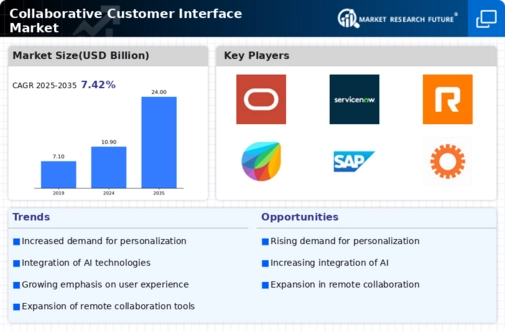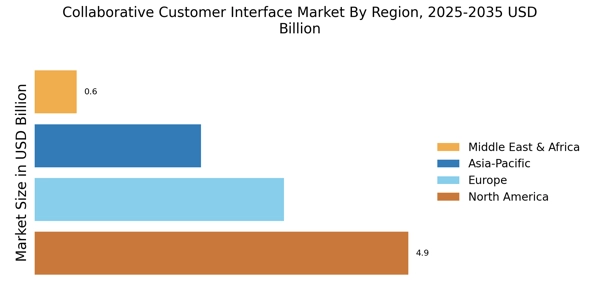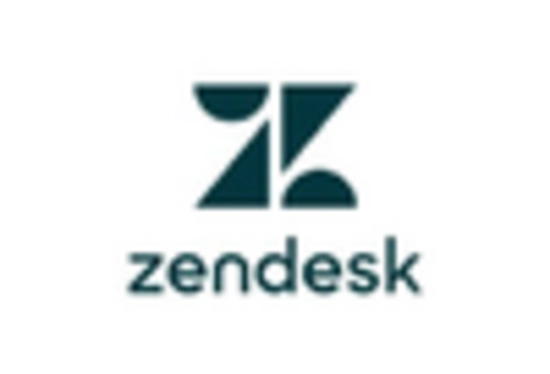The Collaborative Customer Interface Market is characterized by a dynamic competitive landscape, driven by the increasing demand for enhanced customer engagement and seamless communication across various platforms. Key players such as Salesforce (US), Microsoft (US), and Zendesk (US) are at the forefront, each adopting distinct strategies to solidify their market positions. Salesforce (US) emphasizes innovation through its continuous development of AI-driven solutions, aiming to enhance customer experience and operational efficiency. Meanwhile, Microsoft (US) focuses on integrating its collaborative tools with existing enterprise solutions, thereby fostering a more cohesive user experience. Zendesk (US), on the other hand, is leveraging its strong customer support capabilities to expand its service offerings, positioning itself as a comprehensive solution for businesses seeking to improve customer interactions.
The market structure appears moderately fragmented, with numerous players vying for market share. Key business tactics include localizing services to cater to regional preferences and optimizing supply chains to enhance service delivery. The collective influence of these major players shapes a competitive environment where innovation and customer-centric strategies are paramount. As companies strive to differentiate themselves, the emphasis on tailored solutions and localized support becomes increasingly critical.
In August 2025, Salesforce (US) announced the launch of its new AI-powered customer engagement platform, which aims to streamline communication between businesses and their customers. This strategic move is significant as it not only enhances Salesforce's product offerings but also positions the company as a leader in the integration of AI within customer service, potentially attracting a broader client base seeking advanced technological solutions.
In September 2025, Microsoft (US) unveiled a partnership with a leading telecommunications provider to enhance its Teams platform, integrating advanced communication features tailored for remote work environments. This collaboration is indicative of Microsoft's strategy to solidify its presence in the remote collaboration space, suggesting a proactive approach to meet the evolving needs of businesses in a digital-first world.
In July 2025, Zendesk (US) expanded its operations into the Asia-Pacific region, establishing new offices in key markets such as Australia and Singapore. This expansion reflects Zendesk's commitment to capturing growth opportunities in emerging markets, thereby enhancing its global footprint and customer reach. Such strategic moves are likely to bolster its competitive edge against other players in the region.
As of October 2025, the competitive trends within the Collaborative Customer Interface Market are increasingly defined by digitalization, sustainability, and the integration of artificial intelligence. Strategic alliances are becoming more prevalent, as companies recognize the value of collaboration in enhancing their service offerings. Looking ahead, competitive differentiation is expected to evolve, with a notable shift from price-based competition towards innovation, technological advancement, and supply chain reliability. This transition underscores the necessity for companies to invest in cutting-edge solutions that not only meet customer expectations but also anticipate future market demands.


















Leave a Comment